The following analysis of select counties of the Central and Southern Oregon real estate market is provided by Windermere Real Estate Chief Economist Matthew Gardner. We hope that this information may assist you with making better-informed real estate decisions. For further information about the housing market in your area, please don’t hesitate to contact your Windermere Real Estate agent.
Regional Economic Overview
The Central and Southern Oregon counties covered by this report added 3,890 new jobs over the past 12 months, which represents an annual growth rate of 1.6%. Crook, Deschutes, and Jackson counties all had solid job gains. While Jefferson, Josephine, and Klamath added jobs, they did so at a modest rate of .2 to .5%. The unemployment rate across the region was 4.6%. This is up from a rate of 4.3% in the same period of 2022. The lowest jobless rate was in Bend, where 4% of the labor force was jobless. The highest unemployment rate was in Klamath County, where 5.8% of the labor force is still without a job.
Central and Southern Oregon Home Sales
❱ In the second quarter of 2023, 1,983 homes sold, representing a drop of 25.5% compared to the same period in 2022. However, sales were 20.1% higher than in the first quarter of the year.
❱ Compared to the first quarter of 2023, sales rose significantly in all counties.
❱ Sales fell across the board compared to the second quarter of 2022, with significant declines in all markets except Bend.
❱ Higher sales can be mainly attributed to higher inventory levels. All markets contained in this report saw listing activity pick up as the spring progressed.
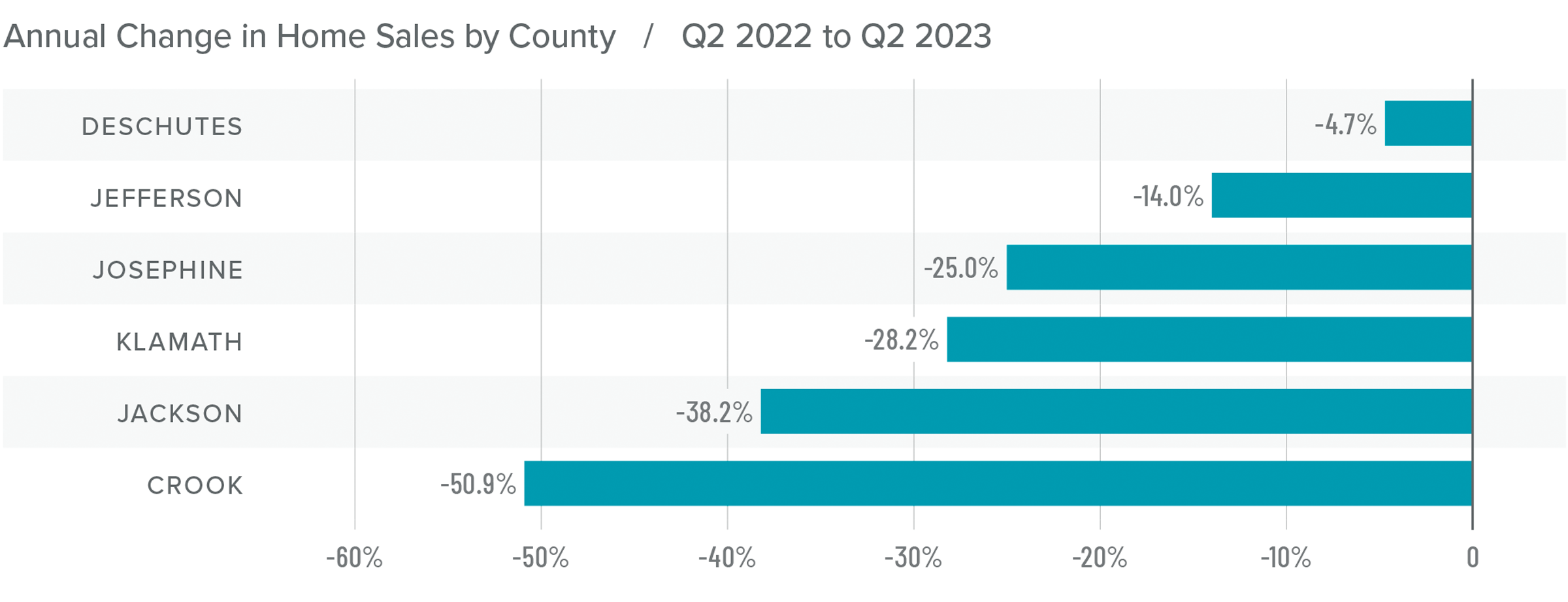
Central and Southern Oregon Home Prices
❱ Average sale prices in the region rose 1.6% year over year to $591,581. Prices were up 11.6% compared to the first quarter of 2023.
❱ Compared to the first quarter of this year, average prices rose across the board. The Bend market showed the greatest increase, with prices up 9.5%.
❱ Three counties contained in this report saw sale prices rise year over year, while three fell. Prices in Crook County experienced a significant increase.
❱ Compared to the first quarter, median list prices rose 2.2%. All markets except Crook County saw asking prices rise.
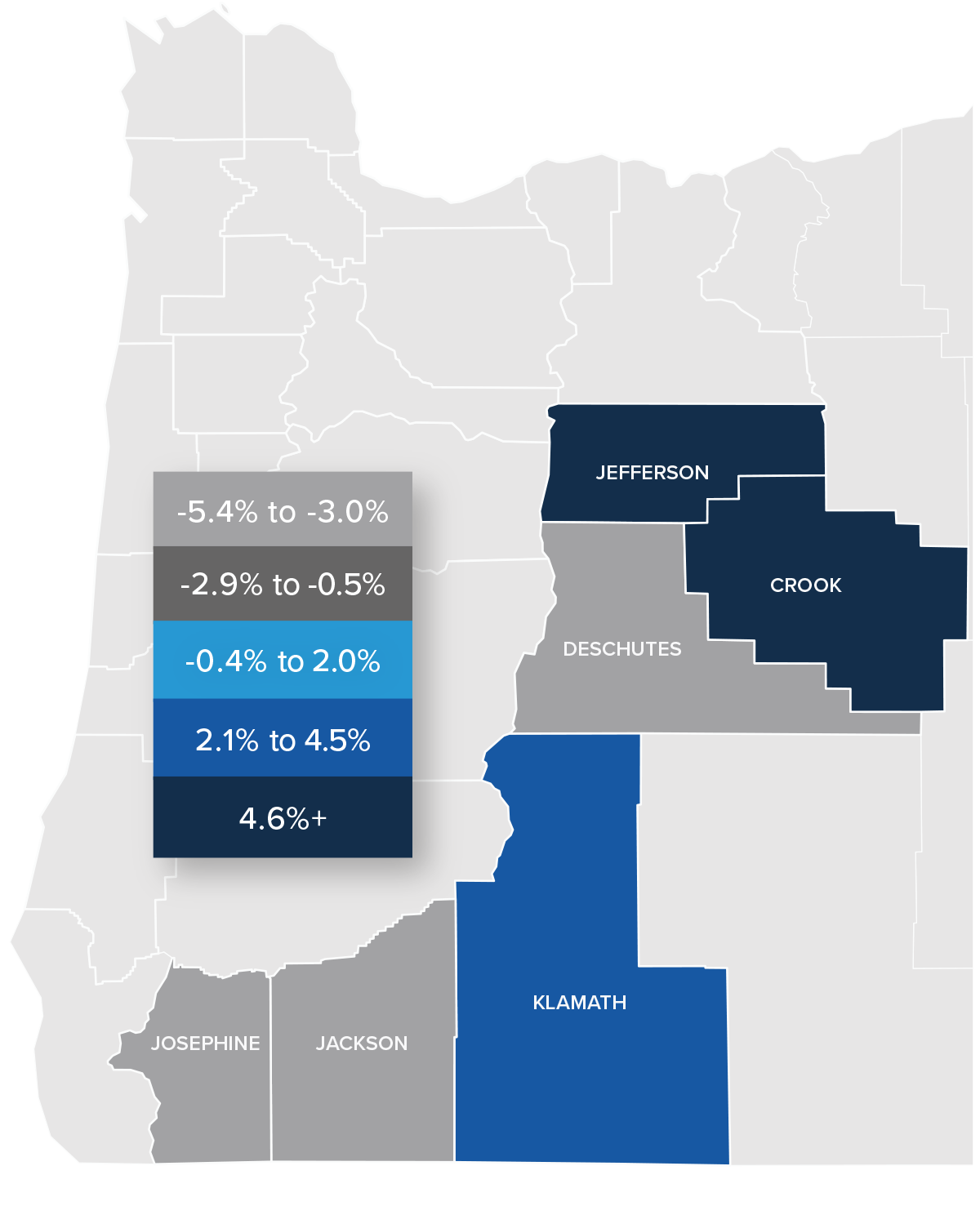
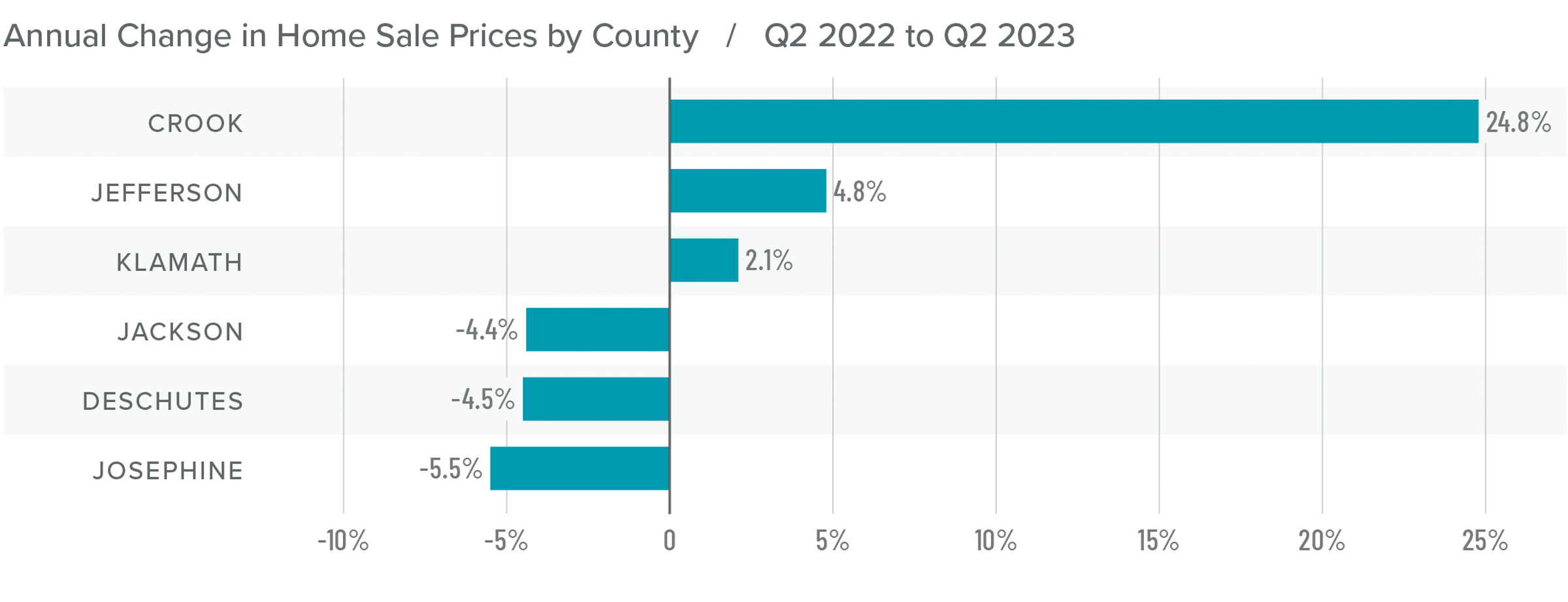
Mortgage Rates
Although they were less erratic than the first quarter, mortgage rates unfortunately trended higher and ended the quarter above 7%. This was due to the short debt ceiling impasse, as well as several economic datasets that suggested the U.S. economy was not slowing at the speed required by the Federal Reserve.
While the June employment report showed fewer jobs created than earlier in the year, as well as downward revisions to prior gains, inflation has not sufficiently slowed. Until it does, rates cannot start to trend consistently lower. With the economy not slowing as fast as expected, I have adjusted my forecast: Rates will hold at current levels in third quarter and then start to trend lower through the fall. Although there are sure to be occasional spikes, my model now shows the 30-year fixed rate breaking below 6% next spring.
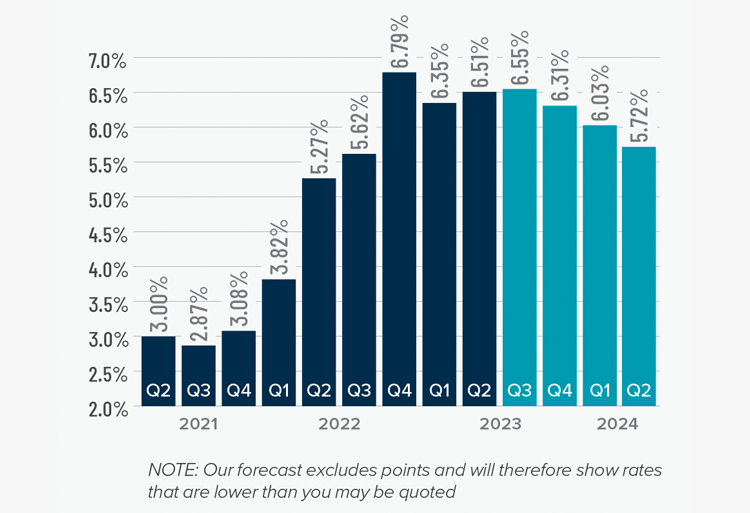
Central and Southern Oregon Days on Market
❱ The average time it took to sell a home in the region rose 23 days compared to the same quarter in 2022. It took 15 fewer days for a home to sell compared to the first quarter of 2023.
❱ The average time it took to sell a home in the second quarter of 2023 was 52 days.
❱ All counties saw market time rise compared to the same quarter in 2022, but it took less time for homes to sell in all counties compared to the first quarter of this year.
❱ Buyers are taking advantage of greater choice in the market, regardless of higher mortgage rates.
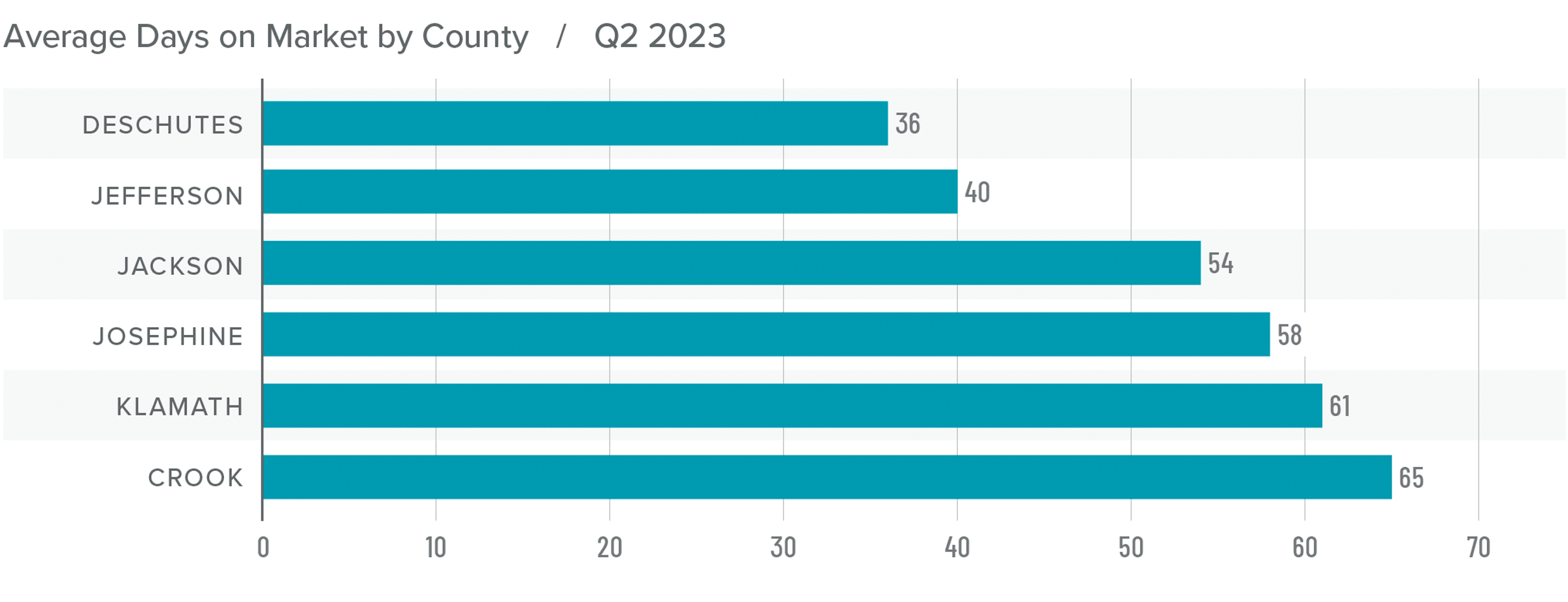
Conclusions
This speedometer reflects the state of the region’s real estate market using housing inventory, price gains, home sales, interest rates, and larger economic factors.
Rising sales and home prices, shorter market time, and higher list prices suggest that the tide may have turned, especially following the very unimpressive data we saw in the first quarter of the year. With an uptick in inventory, I was happy to see sales rise even when faced with higher mortgage rates. The question going forward will be whether or not home prices will continue to increase with higher financing costs in place.

For the time being, it appears as if sellers have the upper hand. As such, I have moved the needle to show a market that is in their favor, but certainly not as much as it was in 2021 and early 2022.
About Matthew Gardner

As Chief Economist for Windermere Real Estate, Matthew Gardner is responsible for analyzing and interpreting economic data and its impact on the real estate market on both a local and national level. Matthew has over 30 years of professional experience both in the U.S. and U.K.
In addition to his day-to-day responsibilities, Matthew sits on the Washington State Governors Council of Economic Advisors; chairs the Board of Trustees at the Washington Center for Real Estate Research at the University of Washington; and is an Advisory Board Member at the Runstad Center for Real Estate Studies at the University of Washington where he also lectures in real estate economics.
 Facebook
Facebook
 X
X
 Pinterest
Pinterest
 Copy Link
Copy Link



